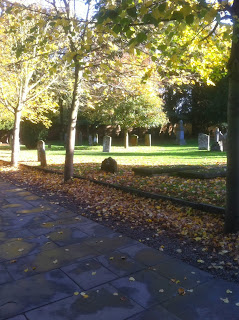This is the Liverpool he left: Lord Street looking towards Church Street mid 1890's
And this is where he ended up.
Shortly after that he died at the Battle of Slabbert Nek
And this is the context:
The Boer revolt was initially successful and caught the British on the back
foot. By 1900 the full resources of the British Empire
had been mobilized. Troopships from India
and Australia, Egypt and Britain
had converged on South
Africa and amongst those soldiers was
Sergeant John Keyton of the Royal Irish Regiment.
The Royal Irish Regiment was part of a force led by Major General
Clements
On July 6/7 in conjunction with other forces they defeated the
Boers at the inappropriately named, Bethlehem.
The Boers retreated and regrouped in the Brandwater Basin.
The
Basin resembled a huge horseshoe formed by the Wittebergen mountains with
Slabbert’s Neck and Retief’s Nek to the north. Retief’s Nek linked on to the
Roodebergen range curving south easterly to Naauwpoort Neck and Golden Gate. Its circumference as a whole was about 75
miles; its base-line about 40 miles is marked by the Caledon River.
The four key access points in this natural citadel were Commando, Slabbert, and
Naauwpoort Neks. My grandfather probably didn't realise all this. He was thinking of keeping warm at night by making fires from animal dung and grass briquettes, or writing letters asking whether his wife had enough money, wishing his friends well, once discussing the things he would do when he returned.
Back to the strategy.
Back to the strategy.
The
British tightened their net in a three pronged attack. The British had a force
of 200,000 and Sergeant John Keyton. They faced a force of 20,000 Boers. The best kind of odds.
The Boers realised
their danger, realised, too, the terrain didn’t suit their manner of fighting
and by July 11 were planning their
retreat. They were limited to only three passes: Naauwpoortnek in the east, Commando and
Generals in the south, Slabberts and Retiefs in the north and the Golden Gate.
Golden Gate
On July 16th
the Boer Commander De Wet, with fifteen hundred well-mounted men and five guns,
broke through Slabbert's Nek and made swiftly for the north-west, leaving the
main Free State
force in a hopeless position behind him
The Boers held
firm at the strong pass of Retief's Nek, but on the 24th July they were forced
to abandon it, as the capture of Slabbert's Nek by Clements threatened their
rear.
Slabbert’s Nek was
heavily fortified and the first attacks on it on the 23rd were unsuccessful.
Two companies of the Wiltshires* did, however, gain and hold their position
until nightfall. They were a stone's throw away from the Boer trenches. A
section of the Royal Irish had also got close to the enemy's trenches, but not
my Grandfather. He was killed in action and never saw what happened next.
Under cover of darkness, Clements sent four
companies of the Royal Irish and two of the Wiltshires on a dangerous night
march. The soldiers had to crawl on their hands and knees along a rocky path
with a drop of 400 feet on one side. This flanking movement along the crest of
the heights surprised the Boers, forcing them to retreat in haste. With the
fall of Slabbert’s Nek, Retief’s Nek was impossible to hold making it
impossible for the Boers to retreat.
Within six days
British forces took Spitzkrans, Relief’s Nek, Slabbert’s Nek and Fouriesburg
almost unapposed. On July 27 the Boers attempted to retreat from Naauwpoort Nek
along the Little Caledon River towards Golden Gate,
but were forced to retreat to Slaapkrans, now known as Surrender Hill.
She did, however, get this.
*With thanks to the Wiltshire Regiment














































